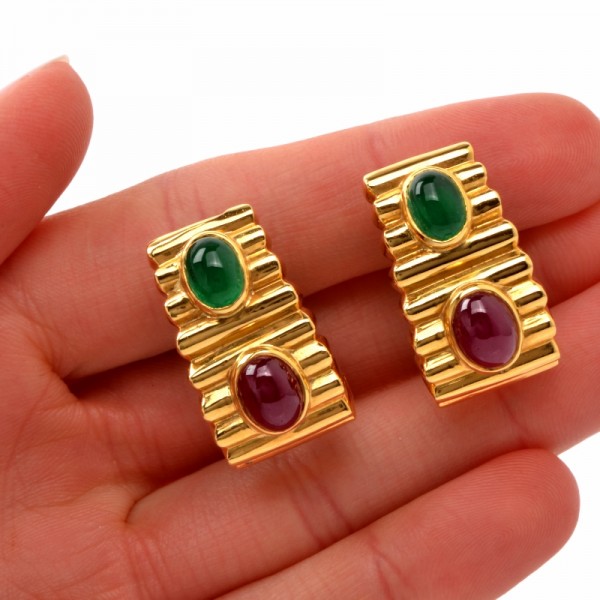
For centuries, yellow gold has been a favorite metal for jewelers, who have used it in some of the most grandiose and magnificent estate jewelry collections to date. As wearable as it is beautiful, gold represents elegance, prestige and status, the perfect combination for an alluring statement piece or the engagement rings of an unforgettable wedding.
But gold’s presence in jewelry history goes beyond estate or antique collections. Art deco’s long sharp lines, natural motifs and bright colors have also fallen for the yellow charm of gold, creating a vintage jewelry allure that is very hard to resist. If you are thinking about adding a golden piece to your jewelry collection, consider these simple steps to make the best purchase.
Purity in estate jewelry gold pieces
When it comes to purity, most gold has a marking inside that indicates its caratage. Pure gold is too soft to use as jewelry, so it is alloyed with a mixture of metals like silver, copper, nickel and zinc to give it the right strength and durability. The most common carat options are 14K, 18K, 22K and 24K. The higher the number, the higher the purity of the gold.
Price
Usually the price of gold jewelry is determined by the purity of the gold, which alloy it’s combined with and the amount of skill and labor put into the piece. Gold is also coveted by investors around the world for its unique properties, which make it a standard yardstick of exchange.
Color
Gold has many variations. In addition to yellow gold, white gold and rose gold are also popular options. You can also find many two-tone styles if you are looking for a mix of color in your jewelry.
Also, combining pure gold with other metals creates a new and diverse color palette. For example, mixing in white metals such as palladium or silver in the combination, creates white gold, a very interesting and highly popular choice for wedding bands. The inclusion of copper results in the soft pink complexion of rose gold, a vividly colorful option that has been used in engagement rings, earrings, bracelets and pendants since the Victorian period.
Gold can also be created in the spectrum of other colors, like green, purple and even black. But the greatest demand for gold around the world remains for the warm, rich and subtle yellow gold.
Identification
In many countries, the law requires that every item of gold jewelry bears a clear stamp indicating its caratage. The identification is often controlled through a hallmarking system. Branded jewelers usually stamp the jewelry themselves, displaying both their own identifying mark and the caratage of each piece.
If you have any questions regarding gold in vintage, antique or estate jewelry pieces and collections, please don’t hesitate to contact us to receive all the information you need.


